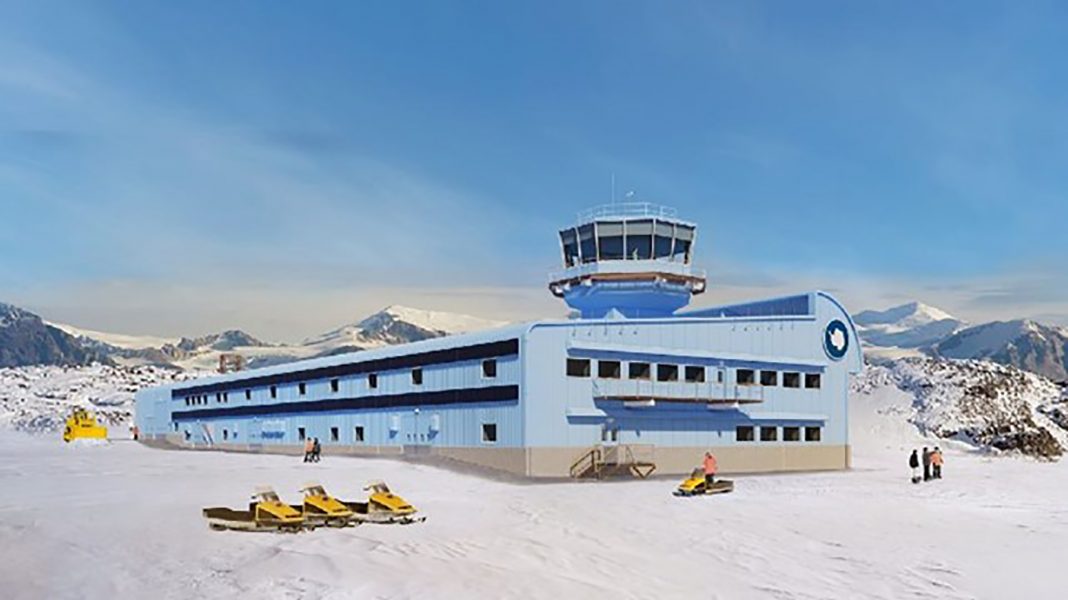The onset of the Antarctic summer means that work has now restarted on the construction of the Discovery Building, part of the British Antarctic Survey Rothera Research Station, including MB-86 ST windows from Aluprof.
Designed by Antarctic Infrastructure Modernisation Partnership, which includes construction partner BAM and its team, Hugh Broughton Architects and design consultants Sweco, with Ramboll acting as BAS’s Technical Advisers, with their team NORR architects and Turner & Townsend. The new building replaces some of the current buildings on the site which are close to the end of their economic life.
The MB-86 was the first ever aluminium system to employ silica aerogel, a nano-porous material that has a high proportion of free void volume compared to conventional solid materials. Aerogel’s high pore volume, low solid content, and its ‘torturous path amorphous structure’ offer very low values of thermal conductivity.
Wojciech Brozyna – MD of Aluprof UK, explained the significance of the work in Antarctica: :”Back in the mid-1980’s it was scientists in the Antarctic who uncovered the hole in the ozone layer. Consequently, we managed to ban the use of gases like chlorofluorocarbons (CFCs) in spray cans and refrigerants which break down ozone molecules in the upper atmosphere. The hole in our ozone layer continues to reduce due to the quick action taken across the globe, we now need to do the same for CO2, which is a much greater challenge.”












